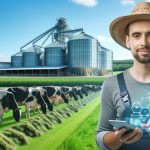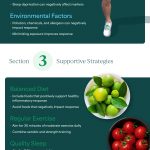The quality of pasture and grazing technology relies on the production of cattle. Pasture is a natural source of food, but it is also an inexpensive method of keeping a herd healthy and productive. When grazing systems are properly managed, they can result in a gradual increase in weight, sufficient digestion and viable farmland.
When the farmers know how cattle and pasture relate, they are in a better position to make improved decisions on how to use the land and manage herds. To ensure cattle are in healthy states, farmers are able to prevent overgrazing in situations when they understand how to address the stresses of grazing and plant regeneration. This reduces the amount of land and cattle required and forms a cycle of productivity that can be replicated over numerous seasons.
The Role Of Pasture In Cattle Health
Good quality pasture contains nutrients that are important in keeping livestock growing, breeding, and producing milk. The proteins, minerals and vitamins in fresh forage are frequently easier to digest than those in stored feeds. When cattle can enjoy a balanced and diverse pasture, their general health is improved, and fewer medical problems and costs to the veterinary are reduced.
Natural grazing behavior in cattle promoted by healthy pasture actually reduces stress and enables cattle to have a robust immune system. Grazing is a better way to keep cattle in good shape because unlike confined feeding, cattle get to move around and maintain better muscle shape. This natural setting helps to promote the long term health of the herd with minimal dependence on costly supplement feeds.
Benefits Of Rotational Grazing
Rotational grazing is a practical way of ensuring that the quality of the pasture and herd productivity is maintained. This activity is referred to as subdivision of the land into smaller units where cattle are moved between the units on a periodic basis. Giving grass time to regenerate before it is grazed again encourages good root growth and well-grown forage.
When farmers practice rotational grazing they tend to have more fertile soils, less weed growth and water retention in the land. On the cattle side, this has the advantage of a more stable supply of nutrient-rich grass and a lower likelihood of developing parasites that accumulate in overgrazed lands. The approach by itself leads to a more sustainable system, which over time sustains livestock and land.
Management Of Grazing Pressure
Management of grazing pressure determines the success of pasture management. Increasing cattle numbers in a single place causes an overgrazing process that destroys grass and exposes the land to soil erosion. Undergrazing, on the other hand, enables plants to get overgrown and become less nutritious. There should be a balance in creating healthy forage.
Farmers are advised to keenly observe the state of the pasture and ensure that the amount of sheep present in a herd or the rotation frequency of animals is not excessive to prevent their destruction. Sensible equipment (fencing, heavy cattle gate, portable cattle troughs, etc.) can help to simplify the process of herding cattle and moving them around. These investments are beneficial because they protect the herd and land and simplify daily operations.
Seasonal Adjustments In Grazing
The changing seasons mean that farmers must change their grazing. Rotation may be increased more often in spring and summer when grass is growing rapidly to avoid wastage and also to keep the forage of high quality. On the other hand, fall and winter can be associated with slower growth, and thus the need to feed cattle with supplements to maintain their health.
Shifting the grazing regimen relative to the climate and pasture development will guarantee that cattle are provided with the appropriate diet at all times of the year. Planning ahead will help farmers balance seasonal deficits and avoid production fluctuations by storing hay or silage in the colder seasons. This is one of the main components of sustainable cattle management.
The Role Of Water And Shade In Pasture
The quality of pasture extends beyond the grass you grow but also to access to water and shelter. Adequate water supply is essential to the health of cattle and cattle troughs are located on strategic areas within grazing fields to keep cattle hydrated. Water shortage decreases feed consumption and growth rate, so the provision of quality water should be a priority.
The other aspect of pasture management is shade particularly when the weather is hot. Cattle are able to cool down under trees or man-made shelters and are not affected by heat stress, leading to consistent weight gain. These components provided in the grazing area will contribute to better animal welfare and the maintenance of the high level of productivity.
Long Term Sustainability Of Pasture Systems
Sustainable pasture systems are based on proper planning and monitoring. The method of reseeding, fertilizing, and weeding make the land productive enough to be used by the generations to come. By treating pasture as a renewable resource, farmers are able to develop a cycle that helps to benefit their livestock and their business.
Through good grazing practices coupled with proper land care, not only can farmers enhance the health of the herd but they also conserve soil, water resources. Sustainable management helps to sustain the long term profitability of cattle farming without damaging the environment. This balance is needed in farms that hope to survive in a more resource conscious world.





